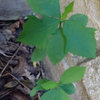Please help ID this plant!
greatworld
9 years ago
Related Stories

GARDENING GUIDESGreat Design Plant: Silphium Perfoliatum Pleases Wildlife
Cup plant provides structure, cover, food and water to help attract and sustain wildlife in the eastern North American garden
Full Story
GARDENING GUIDESPathway Plantings That Please the Senses
Add some color, life and intrigue beside your sidewalk with these 7 suggestions
Full Story
GARDENING GUIDESGreat Design Plant: Ceanothus Pleases With Nectar and Fragrant Blooms
West Coast natives: The blue flowers of drought-tolerant ceanothus draw the eye and help support local wildlife too
Full Story
HOME OFFICESQuiet, Please! How to Cut Noise Pollution at Home
Leaf blowers, trucks or noisy neighbors driving you berserk? These sound-reduction strategies can help you hush things up
Full Story
GARDENING GUIDESGreat Design Plant: Snowberry Pleases Year-Round
Bright spring foliage, pretty summer flowers, white berries in winter ... Symphoricarpos albus is a sight to behold in every season
Full Story
PETS6 Ways to Help Your Dog and Landscape Play Nicely Together
Keep your prized plantings intact and your dog happy too, with this wisdom from an expert gardener and dog guardian
Full Story
LIFEYou Said It: ‘Put It Back’ If It Won’t Help Your House, and More Wisdom
Highlights from the week include stopping clutter from getting past the door, fall planting ideas and a grandfather’s gift of love
Full Story
HOUSEPLANTSMother-in-Law's Tongue: Surprisingly Easy to Please
This low-maintenance, high-impact houseplant fits in with any design and can clear the air, too
Full Story
LANDSCAPE DESIGNNative Plants Help You Find Your Garden Style
Imagine the garden of your dreams designed with plants indigenous to your region
Full Story












floral_uk z.8/9 SW UK
Dave in NoVA • N. Virginia • zone 7A
Related Professionals
Accokeek Landscape Architects & Landscape Designers · Graham Landscape Architects & Landscape Designers · Pelham Landscape Contractors · Blue Springs Landscape Contractors · Brooklyn Park Landscape Contractors · Clayton Landscape Contractors · Fort Atkinson Landscape Contractors · Hawthorne Landscape Contractors · Mashpee Landscape Contractors · Oak Forest Landscape Contractors · Salem Landscape Contractors · Vancouver Landscape Contractors · Four Corners Landscape Contractors · Maplewood Landscape Contractors · Tysons Corner Stone, Pavers & ConcreteTiffany, purpleinopp Z8b Opp, AL
floral_uk z.8/9 SW UK
OttawaGardener
qqqq
Tiffany, purpleinopp Z8b Opp, AL
XIFA
kathyannd
rhizo_1 (North AL) zone 7
kathyannd